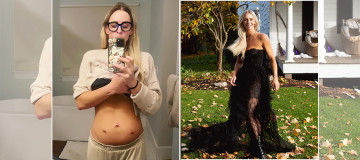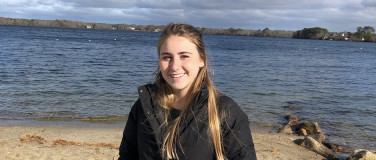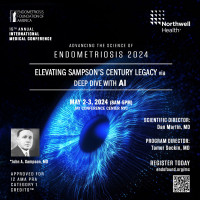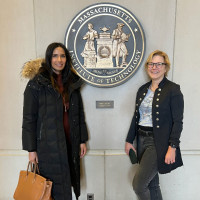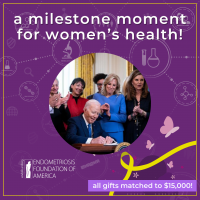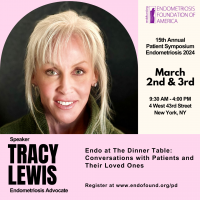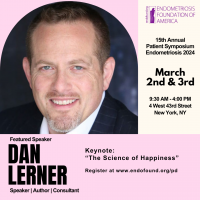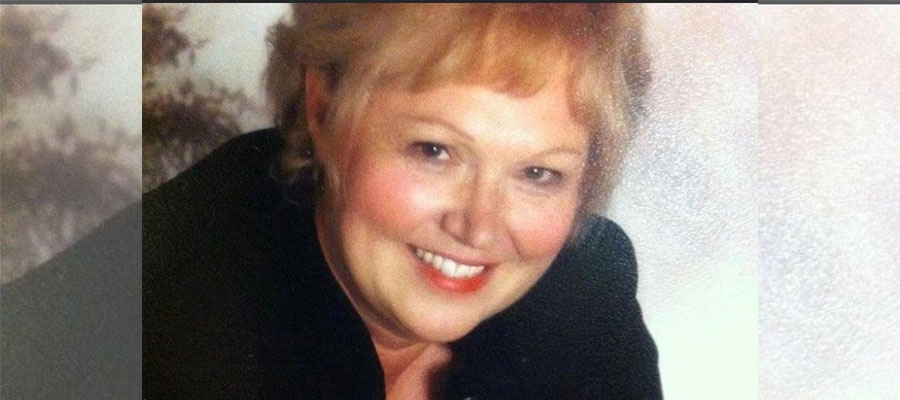
Gail Albritton of El Dorado, Arkansas, began feeling significant pain during her periods as a teenager 60 years ago. With endometriosis awareness nearly nonexistent, she continued to suffer from the symptom every month for more than three decades until she had a hysterectomy in October 1998 at the age of 51.
“In high school, there was no point in me even going to school on the first couple days of my period. I’d stay in bed,” said Albritton, now 76. “My momma said the pain was part of life, part of being a woman, and I just had to endure it. That’s what they believed during her time.”
It was the only symptom of the disease she ever had, but it was enough for her to get the hysterectomy once she knew she didn’t want more children. After the surgery, her doctor gave her some startling news.
“He said, ‘Did you know that you have endometriosis really, really bad?’” she said. Albritton didn’t know what that was until he explained it.
“I said, ‘No wonder I’ve been in so much pain all these years,’” she recalled.
But the surgeon, Albritton said, didn’t remove the endometriosis or recommend that she have it removed. Albritton had no knowledge of the disease to know any better, and she assumes today that her surgeon may have thought the hysterectomy would eliminate her pain. He also prescribed her estrogen as hormonal replacement therapy when she was discharged, but prescribing estrogen alone without progesterone after a hysterectomy can aggravate endometriosis symptoms.
Albritton said that’s what happened to her. Just months later, in early 1999, the pain returned with the same vengeance as before her surgery.
“I told everybody it was like a little man had crawled up inside me and was squeezing everything,” she said. “I would be in the grocery store and the pain would literally knock me to my knees—it was that severe.”
Albritton returned to the doctor who performed the hysterectomy, and even more shocking to Albritton than the pain was the doctor’s response to her pain.
“I was a grandmother by then, and he said I was taking care of my grandbabies too much and needed more rest,” she said. “He suggested I go to a desert island somewhere and sit back and drink piña coladas.”
Though frustrated, Albritton tried to push through, but on Jan. 8, 2000, she woke screaming and in tears.
“I couldn’t sit. I couldn’t lay down. I couldn’t stand. It was by far the most severe pain known to man,” she said.
Albritton went to the emergency room, where doctors gave her a shot of morphine and sent her home with morphine pills.
Two days later, Albritton returned to the hospital and stayed for a week while doctors ran test after test, but she left without a diagnosis. She then went to a new doctor who was confident the problem was endometriosis but didn’t have the training to remove it. She referred Albritton to a doctor in Little Rock, who agreed that endometriosis was likely the source of her pain. He did surgery on her a couple of days later.
“He found endometriosis on my bladder and urethra, and since there wasn’t anything else left from the hysterectomy, it had attached to the scar tissue from that surgery,” she said. “It had also grown upward like a vine and wrapped itself around my sciatic nerve and constricted it. That’s where the pain was coming from.”
Albritton said the doctor told her the sciatic nerve would get better but never fully heal because of the extent of the damage from the endometriosis, and his prognosis has been accurate. Albritton walked with a limp for about a year after the surgery but built up enough strength to live the next two decades virtually pain-free. Now she’s struggling with pain in that area again, but given her age, she’s not surprised.
What has surprised her is how prevalent endometriosis has likely been in her family. She found out her mother had a hysterectomy at 28 because of pain, though she was never diagnosed with the disease. She also has a niece who had fertility issues. Though the niece was eventually able to have two children, she had one miscarriage and significant pain before and after each pregnancy. She had a hysterectomy after her second child and did not take estrogen because of what Albritton went through, and she is doing well today.
“I don’t have a daughter, but I have two granddaughters and told their mothers that endometriosis is hereditary, so if they start having problems, that could be the culprit,” Albritton said. “My older granddaughter is 28 and hasn’t had any problems so far, but my younger one is 11 and is already aware that she’s going to have a period anytime, so she’s ready for it.”
That awareness she’s been able to bring within her own family is why she’s decided to share her story publicly at this stage in her life.
“When I found EndoFound, I said to myself, Okay, it’s time that I put this in writing,” Albritton said. “I don’t know who will see it, but if I can help one person not go through what I went through, then it’s worth it.”
*Patient stories submitted to EndoFound.org are the patient's views, not necessarily those of the foundation. All testimonials are from real patients, may not reflect the typical patient’s experience, and are not intended to represent or guarantee that anyone will achieve the same or similar results.



